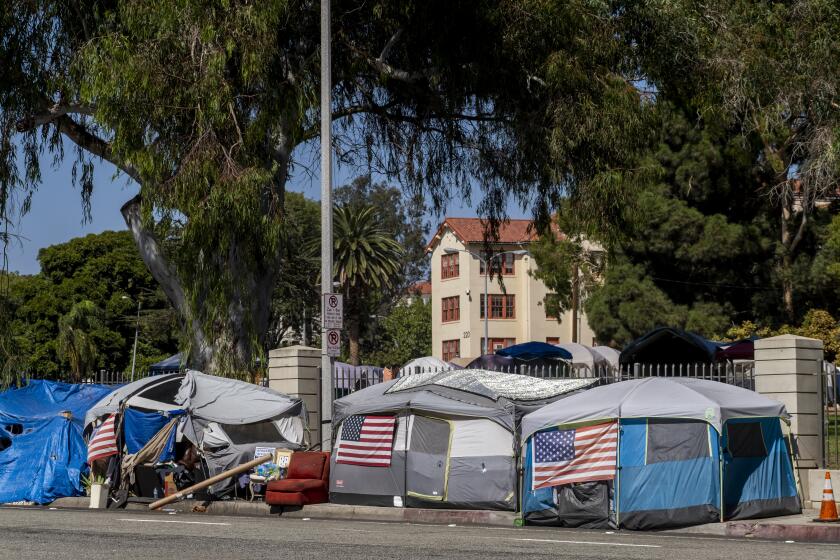How brother of a 9/11 firefighter is helping house West L.A. homeless veterans
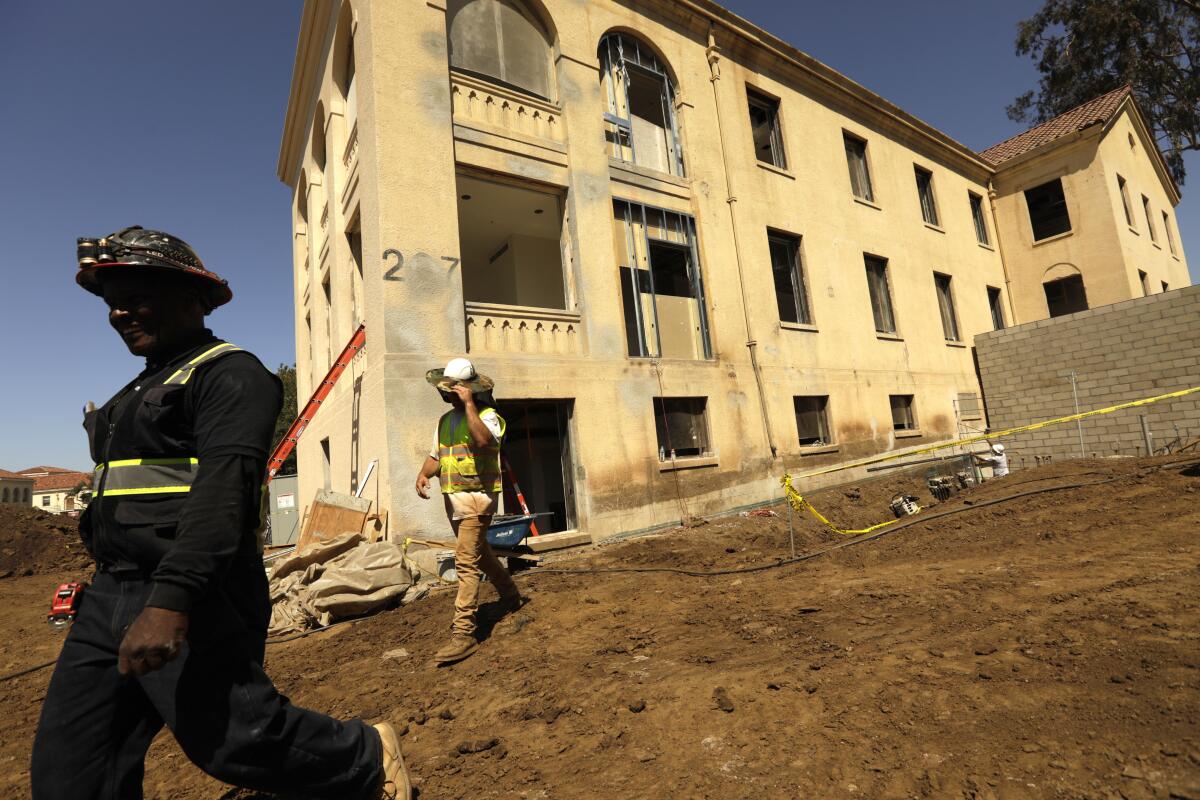
- Share via
With its donations swelling, a charity formed by the older brother of a firefighter who died in the 9/11 terrorist attack on the World Trade Center was ready to up its game.
Its mission of paying the mortgages of fallen first-responders’ families and building housing for critically injured veterans was no longer enough, Tunnel to Towers founder Frank Siller decided.
“We must expand our mission to eradicate homelessness among our veterans nationwide,” Siller told his board late last year.
That goal has brought the New York-based nonprofit to Los Angeles, where it is making a key contribution to expedite the agonizingly slow redevelopment of the Department of Veterans Affairs’ West Los Angeles campus into a community for 3,000 veterans.
An undisclosed grant from Tunnel to Towers will fill a multimillion-dollar gap in the financing for construction expected to continue over the next decade to build at least 1,700 units of housing for homeless veterans.
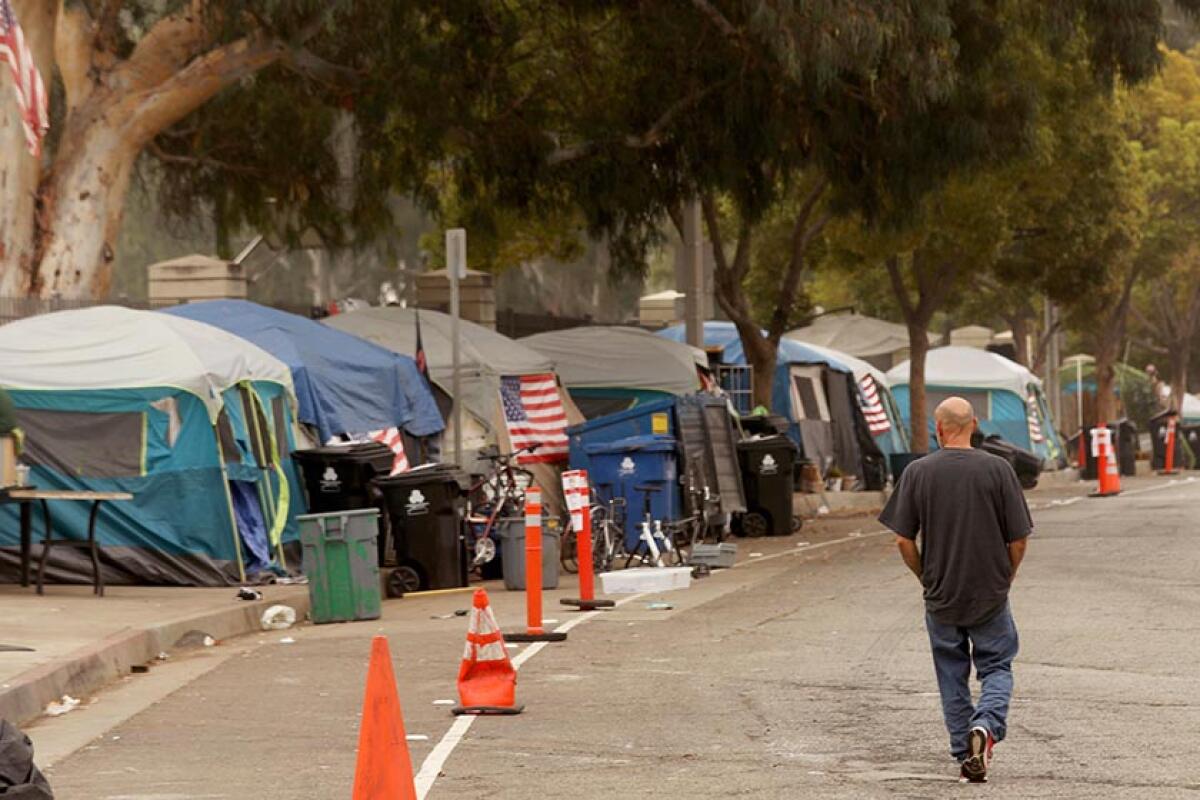
“Their contribution will accelerate the building of those units by hopefully a year or so,” said Steve Peck, chief executive of U.S. VETS, one of three developers on the team selected by the VA to build the housing and oversee the services and governance that will make the development a community.
The project grew out of the 2015 settlement of a lawsuit alleging that the VA misused the 388-acre property by leasing parts of it for non-veteran uses while failing to serve veterans.
The Veterans Affairs campus in West Los Angeles announced plans to house over 500 homeless veterans by year’s end.
But since its unveiling in a 2016 master plan, there has been little tangible progress. Although a tiny-home village has been built, allowing the VA and local authorities to relocate homeless veterans who had formed an encampment nearby on San Vicente Boulevard, that was not part of the master plan.
In November, the VA inspector general took the agency to task for completing only one building, with 55 housing units, out of the 480 projected in the master plan’s four-year target. When completed, the 28 new and rehabilitated buildings on the campus will be operated by the developers on long-term, or in VA terminology “enhanced-use” leases.
“Reasons for VA’s limited progress include required environmental impact studies, needed infrastructure upgrades, the need to establish a principal developer enhanced-use lease, and challenges faced by the developers in raising needed funds from public and private sources,” the inspector general found.
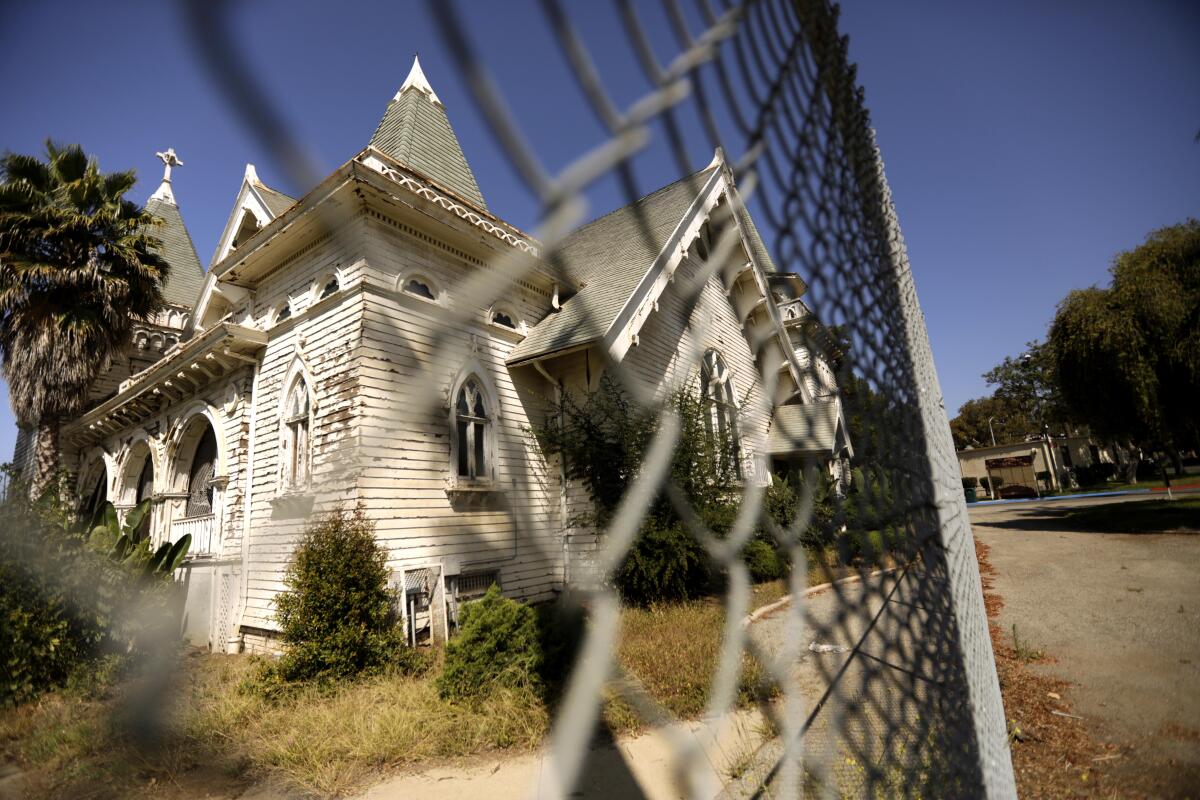
After initially issuing leases for individual buildings, the VA in 2018 selected the West Los Angeles Veterans Collective to complete the remainder of the master plan that includes a projected 1,694 housing units, a town hall, space for service providers and restoration of a Victorian-era chapel.
Along with U.S. VETS, the collective is made up of Century Housing, a nonprofit that builds and finances affordable housing, and Thomas Safran and Associates, a Brentwood-based for-profit affordable housing developer.
The first hurdle the team faced was upgrading underground utilities dating to the prewar housing on the campus that was abruptly shut down following the 1971 Sylmar earthquake.
“Hundreds of millions poured in, a lot of it is underground,” said Laney Kapgan, U.S. VETS vice president for development and communications. “Opening up the trunk lines and putting all that in, it’s not what people care about or want to see.”
Once that was done, money remained an obstacle. Most of the $1.1-billion projected cost will come from state and federal housing grants, tax credits and bonds. But to apply for those funds the West Los Angeles Veterans Collective first has to line up the difference from private sources.
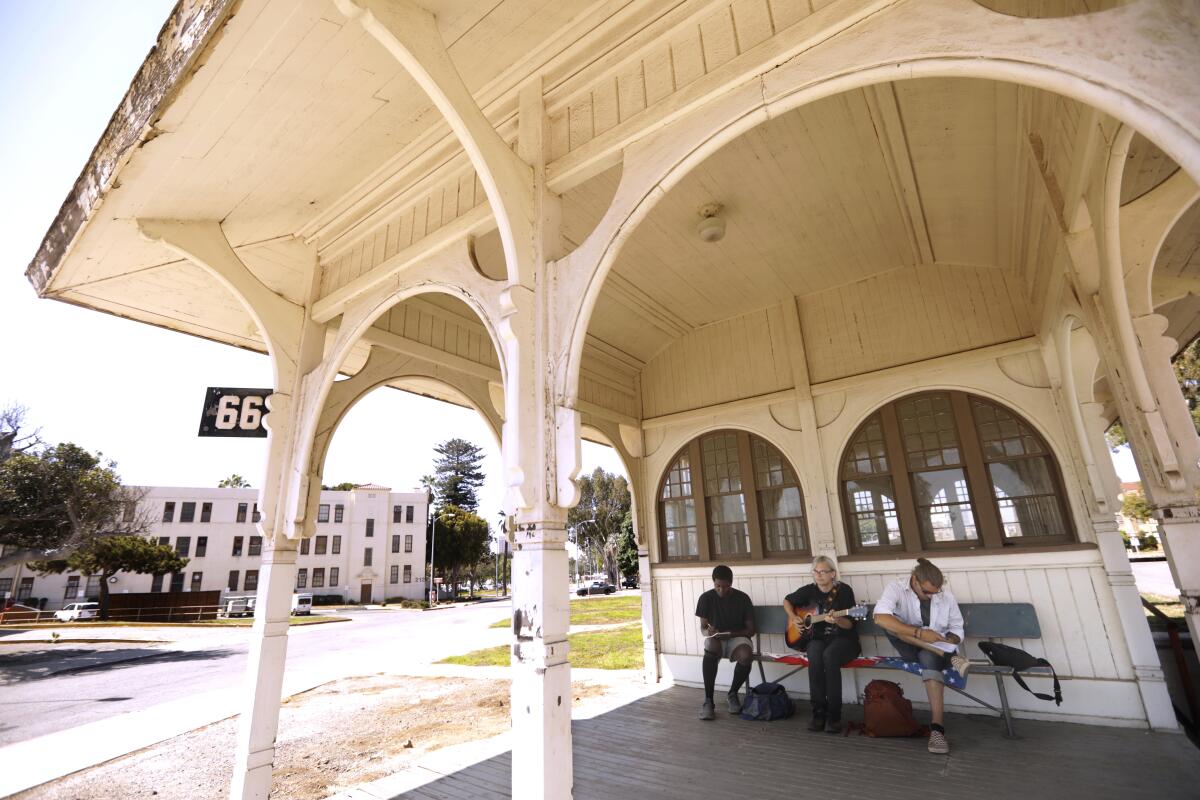
The three partners are working independently on individual buildings in the plan, meaning each would have had to raise that gap funding for its projects.
In stepped Tunnel to Towers, named to memorialize the fateful trip of Brooklyn firefighter Stephen Siller, who left his vehicle behind and ran through the blockaded Brooklyn Tunnel on Sept. 11, 2001, to get to the twin towers.
Formed by his older brother in 2001, the nonprofit grew moderately, reporting just over $7 million in donations on its 2015 tax return. In 2019, donations doubled to nearly $40 million and have more than doubled in each of the succeeding two years, reaching $258 million last year.
“Our ability to do more good and to branch out comes from the successes we’ve had in showing the American people that Frank Siller delivers,” said Brad Blakeman, a senior advisor to the organization. “He doesn’t go small-ball. He goes big on everything. Our heroes deserve it.”
In its new initiative, Tunnel to Towers found an ally in Los Angeles-based U.S. VETS, a national veterans housing and services provider that operates 30 residential sites where veterans receive counseling, career services and case management.
Together, they are building veterans’ housing in Florida, Texas, Arizona and at March Air Reserve Base in Riverside.
The collaboration brought Siller’s attention to the VA’s West Los Angeles campus, a gem of real estate amid L.A.’s priciest neighborhoods with a truncated history as the housing of last resort for veterans of America’s wars. From its donation to the U.S. government in 1887, the campus has treated and housed veterans of the Civil War, the Spanish-American War, World War I, World War II, the Korean War and the Vietnam War.
Most of his clients are homeless, and many are military veterans; the price is negotiable and can be paid in food; and nobody with empty pockets is turned away.
After the removal of more than 1,000 residents in 1972, the Roaring ’20s- and Depression-era buildings were refashioned as outpatient clinics, research facilities and a domiciliary where veterans with ongoing health needs live after being discharged from the VA hospital on the south portion of the campus.
But several remained vacant and, over the decades, fell into disrepair. Because of their historic value, the master plan calls for 14 buildings to be brought up to current standards but preserved in their original form with another 14 built from the ground up.
“When we became aware of the need in Los Angeles and we became aware of this sacred ground, Frank Siller and the board said we must be a part of this,” Blakeman said. “We have historic buildings that will be given a new life and be restored and we’ll be able to house many veterans in the L.A. area.”
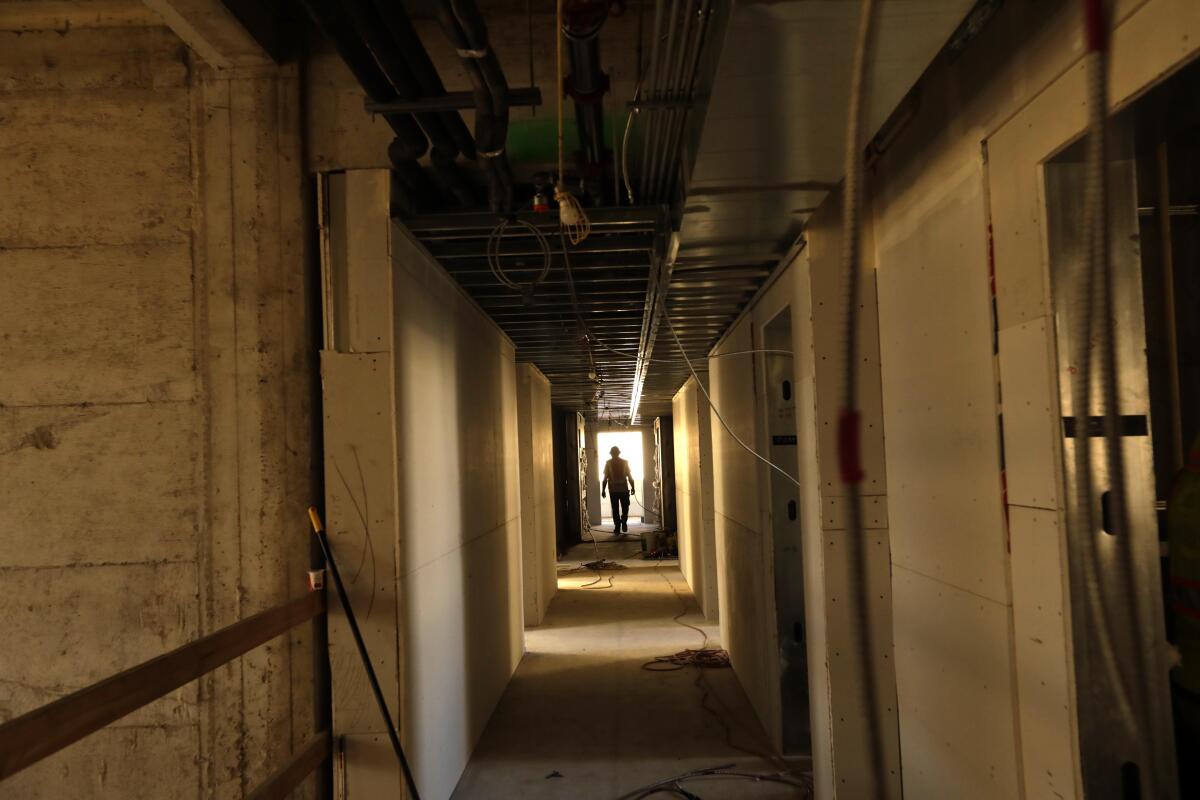
The model for the VA master plan comes from another thread of L.A. history that is hardly remembered outside the small circle of veterans and housing cognoscenti.
As the Century Freeway, now Interstate 105, was built, thousands of homes were cleared in its path. A federal lawsuit challenging the project culminated in a 1979 settlement establishing the Century Freeway Housing Program with a charge to create 4,000 replacement homes.
After achieving that goal, the state agency was converted to a nonprofit, Century Housing Corp., a social impact lender that has helped finance thousands of affordable-housing units in California, and one of the three partners in the collective.
Its flagship is Century Villages at Cabrillo, a 27-acre campus in Long Beach where last year more than 1,500 adults — 42% of them veterans — and 400 children occupied permanent, transitional and short-term housing. Dozens of nonprofit groups, among them U.S. VETS, keep staff on site providing healthcare, counseling, job training and case management.
“That is our model for this project,” said Peck of U.S. VETS. “We’ll expand that model.”
The donation from Tunnel to Towers, which will be spread over several years to ensure access to tax credits and bonds, comes at a time when progress on the master plan is at last materializing. Two more buildings that were commissioned before the collective came on board are expected to open by the end of the year, adding 122 more units.
The collective’s first project, a 60-unit building for senior veterans and their families, is scheduled to open this fall. By early next year, construction will be underway on five more buildings with nearly 400 more units.
“We’re finally bringing veterans home,” said Kapgan of U.S. VETS. “And this is a good time to tell the story.”
More to Read
Sign up for Essential California
The most important California stories and recommendations in your inbox every morning.
You may occasionally receive promotional content from the Los Angeles Times.
